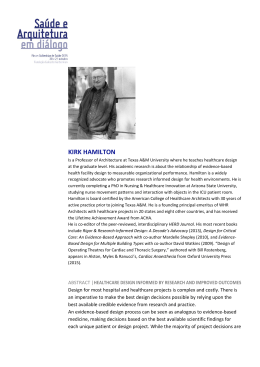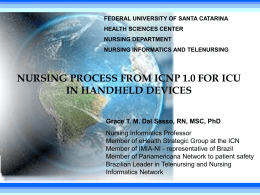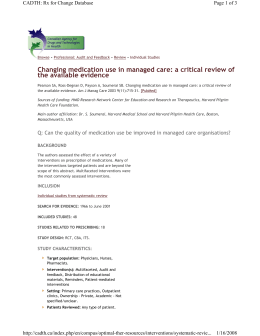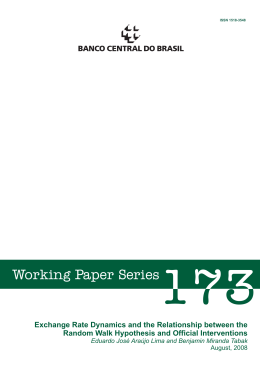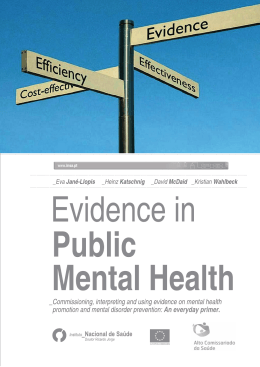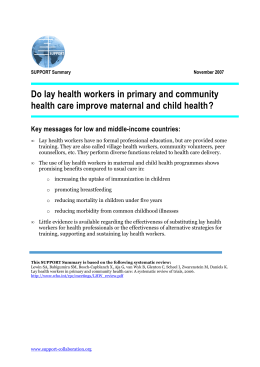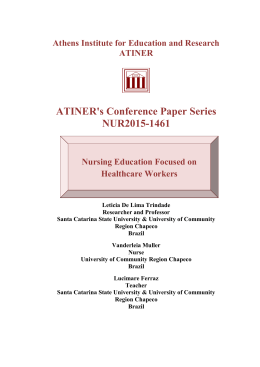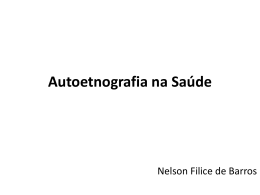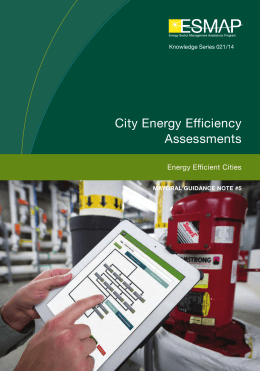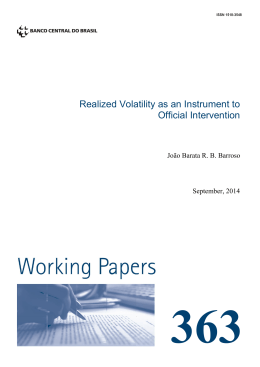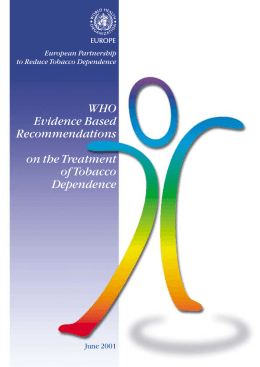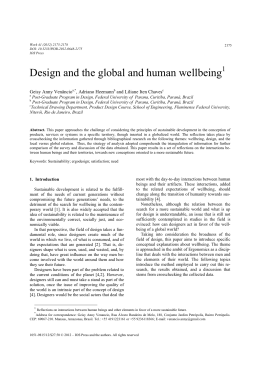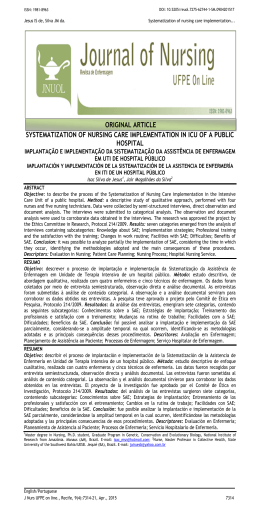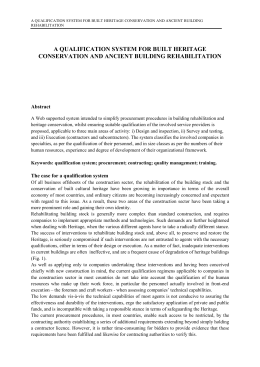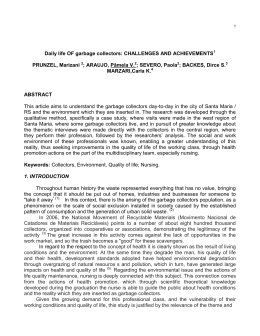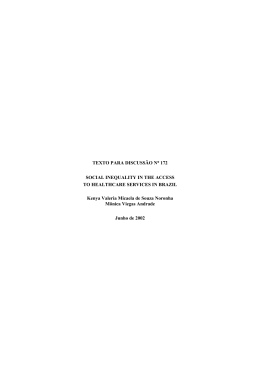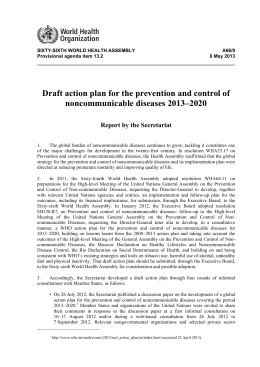Loughborough University Institutional Repository Manual handling in healthcare This item was submitted to Loughborough University's Institutional Repository by the/an author. Citation: HIGNETT, S. and FRAY, M., 2010. Manual handling in healthcare. Proceedings of the 1st Conference of the Federation of the European Ergonomics Societies [FEES], Bruges, Belgium, 10-12 October 2010. Additional Information: • This is a conference paper. Metadata Record: https://dspace.lboro.ac.uk/2134/7175 Version: Accepted for publication Publisher: Institute of Ergonomics and Human Factors, on behalf of FEES / ECE ( c The authors) Please cite the published version. This item was submitted to Loughborough’s Institutional Repository (https://dspace.lboro.ac.uk/) by the author and is made available under the following Creative Commons Licence conditions. For the full text of this licence, please go to: http://creativecommons.org/licenses/by-nc-nd/2.5/ MANUAL HANDLING IN HEALTHCARE Sue Hignett and Mike Fray Healthcare Ergonomics and Patient Safety Unit Loughborough University, Loughborough, UK. LE11 3TU Patient handling is a known cause of musculoskeletal risk for healthcare staff. A range of ergonomic and other approaches have been used to try to reduce the effects of these tasks, e.g. risk assessment and management, training, equipment provision, culture change. A European collaboration (European Panel on Patient Handling Ergonomics) was formed in 2004 to share information about research on patient handling and develop research ideas for European collaborations. Three collaborations will be described. The first reviewed the implementation of the European Union Directive on Manual handling for patient handling; the second reports the development of a Technical Report (TR ISO/CD 12296) for the manual handling of people in the healthcare sector; and the third describes an Intervention Evaluation Tool that has been produced to allow the evaluation of both single factor and multi-faceted interventions for patient handling. Introduction Caring for people can involve contaminated, physically demanding, and emotionally challenging work in situations where the patient can be both physically and mentally vulnerable. Nursing work is often physically heavy (involving lifting weights which would be unacceptable in other industries); physically dirty (involving tasks such as washing soiled bodies); and highly repetitive (Hignett, 2001; Lee-Treweek, 1997). Buckle (1987) summarised the epidemiological findings from 1960s to the 1980s, confirming that nursing was among the highest risk occupations with respect to low back problems, with a point prevalence of approximately 17%, an annual (period) prevalence of 40-50% and a lifetime prevalence of 35-80%. More recently Estryn-Behar et al (2003) collected data from over 30,000 nurses in 10 European Union countries to investigate the physical load among nursing staff as part of the NEXT study (Hasselhorn et al, 2003). The results found that musculoskeletal disorders (MSDs) were still common with more that 25% of respondents having a medical diagnosis of MSD, suggesting that nurses are still exposed to a high risk of back injury associated with their working activities. There have been at least four systematic reviews of patient handling interventions. Three used a Cochrane approach (Amick et al, 2006; Dawson et al, 2007; Martimo et al, 2008). Although they only reviewed a small number of studies they concluded that there is: A moderate level of evidence for the effect of OHS interventions on musculoskeletal conditions in healthcare settings (Amick et al, 2006). A moderate level evidence for multi-component patient handling interventions and physical exercise interventions (Amick et al, 2006). Moderate evidence that training in isolation was not successful and that multidimensional interventions were effective (Dawson et al, 2007). No evidence that training with or without lifting equipment was effective in the prevention of back pain or consequent disability. They suggested that either the advocated techniques did not reduce the risk of back injury or that training did not lead to adequate change in lifting and handling technique (Martimo et al, 2008). The fourth (Hignett et al, 2003) used an a more modern mixed methods approach (Pluye et al, 2009) to systematic review methodology by including all study types (quantitative and qualitative). To achieve this heterogeneity, each study was defined within a study type hierarchy. A quality score was then allocated by using an appraisal/extraction tool within each category rather than comparatively between categories. Interventions were grouped as multi-factorial, single factor and technique training-based. The results were reported as summary statements with the associated evidence level (strong, moderate, limited or poor). The findings are summarised as: Strong evidence that interventions predominantly based on technique training have no impact on working practices or injury rates. Multi-factor interventions, based on a risk assessment programme, are most likely to be successful in reducing musculoskeletal injuries related to patient handling activities. The seven most commonly used strategies were identified (table one). It is suggested that these seven factors could form the basis of a generic programme, although it is likely that an intervention strategy and programme will need to be further developed and extended in order to be responsive to local organisational and cultural factors. The risk assessment process could facilitate the detailed design of the programme, and identification of additional appropriate strategies, with the allocation of priorities based on local negotiation with managers and staff. Based on the findings of the systematic review, Hignett (2003b) recommended the provision of a minimum set of equipment for all clinical environments where patient handling occurs on a regular basis: lifts (mobile and ceiling), stand-aids (standing lifts), sliding sheets, lateral transfer boards, walking belts, adjustable height beds and baths. Table 1: Intervention Strategies for multi-factor interventions (Hignett, 2003a) Intervention strategy No. of Occurrences Ave. quality Rating of studies Equipment provision/purchase Education and training (range of topics) Risk assessment Policies and procedures Patient assessment system Work environment redesign Work organisation/practices changed 18 18 50% 54% 13 10 8 7 7 55% 50% 43% 58% 63% European Panel on Patient Handling Ergonomics The European Panel on Patient Handling Ergonomics (EPPHE) was formed in 2004 to share information about research on patient handling from thirteen European countries: Denmark, Finland, France, Germany, Greece, Ireland, Italy, Netherlands, Poland, Portugal, Sweden, Switzerland and United Kingdom (UK). EPPHE was formed from a collaboration of Patient Handling Experts from the International Ergonomics Association (IEA) Technical Committees on Healthcare Ergonomics (HETC9) and Musculoskeletal Disorders (TC13). There have been three main activities: 2005 - 2007: Review of implementation of EU Health and Safety Directive on Manual Handling (90/269/EEC) for patient handling (Hignett et al, 2007) 2008 – 2010: Technical Report TR ISO/CD 12296: Ergonomics - manual handling of people in the healthcare sector 2005 – 2010: Development of Intervention Evaluation Tool (Fray, 2010) Review of implementation of EU Health and Safety Directive on Manual Handling There is European legislation on manual handling to ‘ensure that workers are protected against the risks involved in the handling of heavy loads’ (Council Directive 90/269/EEC). In 2007, Hignett et al reported a collaboration to review the implementation of this directive for patient handling in nine European countries and discuss the residual problems (barriers) to safer patient handling. It was found that five countries implemented the directive in 1993 (France, Ireland, Portugal, Sweden and UK), followed by Finland, Greece and Italy in 1994 and Germany in 1996. The provision of guidance for manual handling activities in health and social care varied with only Finland, Sweden and UK having national official manuals and the guidance for patient handling. Although the other countries reported having no official handling manual there were various guidance publications from different individual and regional sources. Many residual barriers to reducing the manual handling risks were identified from lack of staff and equipment to the difficulty in changing historical practices. There were also concerns that recommendations for patient handling techniques were being based on opinion rather than scientific evidence (Ireland, Finland, Germany, Greece and UK). Overall it was felt that patient handling issues needed to be fully integrated into clinical nurse training, based on educational standards and competencies. Technical Report TR ISO/CD 12296: Ergonomics - manual handling of people in the healthcare sector EPPHE members are working with the Committee: ISO/TC 159/SC 3/WG 4 Human physical strength- Manual handling and force limits CEN/TC 122/WG 4 Biomechanics to develop a Tehcnical Report on the manual handling of people in the healthcare sector. The Technical Report (TR) is co-ordinated by Natale Battevi and Enrico Occhipinti from EPM, Milan. The main goals are to: Improve caregivers’ working conditions by decreasing biomechanical overload risk, thus limiting work related illness and injury and the consequent costs and absenteeism. Take into account patient care quality, safety, dignity and privacy as regards their needs and specific personal care and hygiene manoeuvre. The TR provides recommendations for patient handling considering work organization, type and number of patients to be handled, aids, spaces where patients are handled as well operators’ education and awkward postures but does not consider objects handling (movement, transfer, pushing and pulling) and animal handling. The recommendations in the TR aim to allow the identification of problems, and estimation of the risk, associated with (patient) manual handling and the application of solutions for patient manual handling. The recommendations are based primarily on data integration from epidemiological and biomechanical approaches to manual handling and on the consensus of international experts in patient handling. There are 6 informative annexes: A: Review of risk assessment and evaluation methods and relevant (national) guidelines. B: Organizational aspects of patient handling interventions. This annex describes the range of managerial interventions and gives examples of successful interventions and the measures of importance and success. C: Criteria for the selection and use of appropriate aids and equipment. D: Summary of international recommendations for spaces where patients are manually handled, including use of equipment, task activity and room (building) dimensions. E: Fundamentals of staff education, with patient handling as part of the risk management system, including core competencies for patient handling training. F: The evaluation of intervention effectiveness. Intervention Evaluation Tool (IET) For many years the evaluation of patient handling interventions has been difficult. A new evaluation tool (Intervention Evaluation Tool, IET) has been developed to try to address the complexity of these multi-factorial interventions and allow the comparison of interventions across different types of outcomes (Fray, 2010). The IET has 12 targeted and detailed outcome evaluations. It can be used to compare the performance of patient handling management systems before and after interventions, between organisations and can also be used to guide future interventions in any healthcare location. The development and evaluation of the IET had two phases (figures 1 and 2). In phase 1, focus groups were held in four European countries (Finland, Italy, Portugal and UK) to explore the intervention outcomes that were both currently being used and would, in the future, be the preferred outcomes. The groups were co-ordinated by a member of EPPHE with real-time whispering interpretation and subsequent translation/cross-translation of the recorded focus group and written data. This resulted in a priority list of the 12 most important outcomes for patient handling interventions. Also in phase 1, an extensive literature review systematically reviewed previously used and published patient handling intervention measurement tools. Measurement tools for the 12 outcomes were selected from the literature (where possible) and included if they had previously been used in a published (peer reviewed) patient handling study; had been used to score an intervention trial; and were assessed to have a Quality Rating over50% (Hignett et al 2003). It was found that tools to evaluate patient outcomes were poorly represented in the literature, so new measurement tools were developed (but not validated). 1. Safety Culture Safety culture is a measure of organisational behaviour and how the organisational systems manage the patient handling risks. The data for safety culture in the IET is from interviews with the ward/unit manager, with additional questions about management commitment to managers, advisors and staff. This section is based on the Patient Handling Observational Question Set (PHOQS; Hignett and Crumpton, 2005). It gives an audit of procedures rather than behaviours e.g. policy, risk assessment, records of training etc., and should measure support for the prevention programme both financially and organisationally. 2. Musculoskeletal Health (MS) Measure The MSD Health Measure uses a shortened and validated version of the Nordic Questionnaire (Dickinson et al., 1992) as a self-completion questionnaire. It provides a measurement of the level of MSD in the working population including injuries, chronic conditions, fitness for work, etc. 3. Competence Compliance This section uses the DiNO score system designed and evaluated by Johnsson et al (2004). This observational checklist looks at individual staff behaviour when carrying out patient transfers, including competence, skill, compliance with safe methods and equipment use. Figure 1. Development of Intervention Evaluation Tool (Fray, 2010) 4. Absence or staff health Sickness absence data are collected in the organisation with a standardised form to record the time away from work or lost productivity due to patient handling related MSD, days/shifts lost, staff on reduced work capacity, staff turnover. It does not record data from self-reported systems. The IET calculation is standardised for exposure per work hour per individual to allow comparisons between work areas and different size samples. 5. Quality of care The quantification and assessment of quality of care has challenged researchers and there are many suggestions for calculations. Nelson et al. (2008) reported measures of quality of care to patient handling to give a complex observational tool of all aspects of care delivery (with over 30 different measures). The IET evaluates whether patient needs are being considered for dignity, respect, safety, and security when they are moved or handled during a hospital stay. 6. Accident numbers The inclusion of incident numbers that have patient handling factors is unclear and complex. The IET scoring system includes an under-reporting ratio from the unit manager and selfreports of unsafe practice by the staff as well as accidents or near misses from patient handling where staff could have been injured. 7. Psychological well being The measurement of the staff mental health status, psychological stress, strain, and job satisfaction etc. is based on used a three-section assessment tool used by Evanoff et al. (1999) as a single page staff questionnaire. 8. Patient condition As with quality of care, there were few precedents of measuring patient condition (length of stay, treatment progression, level of independence) in patient handling studies. The concept of being able to improve the patient’s condition due to high standards of patient handling management is unproven, but has a high level of intent among practitioners. Meeting the clinical needs of the patient and improving care delivery is evaluated using a questionnaire given to staff and management, as it was suggested that patients may not have enough understanding of what should happen to them in a care situation. 9. Patient perception The subjective assessment of a patient when being moved in a single transfer or mobility situation, fear, comfort etc. is recorded as a direct assessment (comfort, security, fear) of the transfer or task using a 9-point scale (Kjellberg et al. 2004). 10. MSD exposure measures This section evaluates the physical workload factors that place the staff under strain, for example forces, postures, frequency of tasks, and workload measures. The question set used in the IET was developed from three studies: self reported workload measure (Knibbe and Friele, 1999), patient parameters and workload (Cohen et al., 2004) and the Arjo Resident Gallery (Arjo ab, 2006). 11. Patient injuries Accident reporting systems were examined for patient harm accidents (bruises, lacerations, tissue damage, falls, etc.) and pressure ulcer prevalence scores related to the movement and positioning of patients. 12. Financial The financial impact of MSD in an organisation is due to lost staff time, lost productivity costs, compensation claims, litigation, and all direct and indirect costs against the costs of any prevention programme. These organisational outcomes are recorded as part of the management interview for the cost of days lost, reduced capacity days, MSD claims, treatments for the MSD (internal or external), and interventions extra to the organisational set up. The data are standardised using the OSHA formula (Charney, 1997, 2006; Collins et al., 2004) and the calculation can then be used as a cost benefit model (e.g. Siddarthan et al., 2005). In Phase 2, a preliminary evaluation of the IET was carried out at hospitals in UK, Finland, Italy, Portugal to complete an IET assessment on two separate ward areas (a well-managed unit and a poorly performing unit) to give 8 datasets. The data collection tools and instructions for data collection were translated and sent to the EU facilitators to check for typographical and interpretation differences. The trials were co-ordinated by the EU facilitators (EPPHE member) with the assistance of the managers and Patient Handling Advisors in each hospital. Where appropriate, the local permissions and ethical approval were obtained. The final evaluation process was an expert panel, with members from EPPHE, to review the IET. The facilitators from the EU trials reported good success with the data collection, with no parts of the documents requiring further clarification during the trials. The growing body of knowledge about patient movement has resulted in a series of recommended methods that are becoming acceptable worldwide, and there is now much less variation in recommended practice across many countries. Organisational behaviour measures (1) Measures of safe or quality behaviour (3,5,6) Measures of effects on individuals (patients and staff) (2,4,7,8,9,10,11) Financial outcomes (12) Figure 2. Strength of outcome by level of interaction (Fray, 2010) Some outcomes may have effects on other outcomes (figure 2), which raises the level of their contribution to the overall score. Safety culture (1) interacts with all other groups, while financial analysis interacts with no other outcomes which may explain the order of the priority rating in phase 1. Other high priority outcomes showed higher levels of interaction; competence and compliance (3), quality of care (5), and accident numbers (6), all had effects on eight or more other outcomes. Several outcomes interacted with four to six others; MS health measures (2), psychological well being (7), patient condition (8), MSD exposure and patient injuries (11). Placing a high priority on a financial outcomes will probably only be achieved with good performance in all the other outcomes, and interventions aimed at 1, 3, 5, 6 will probably give the best return. The effect of these interactions may influence the selection of interventions to improve the IET performance. In its present form the IET analysis delivers two sets of scores, 12 individual section scores and a total IET score. The patient handling experts and facilitators involved in the evaluation indicated as much interest in the section scores as the total. It may create opportunities for the future use of the IET by focusing on specific improvements in individual sections, whilst maintaining the scores in other sections. This should result an improvement in the total IET score. Conclusion Knowledge in patient handling has advanced considerably in the last 30 years, from the publication of the first patient handling guidance (Troup, 1981) through to a European collaboration to prepare an international Technical Report. Four systematic reviews have concluded that training has a very limited application. This is reflected in the TR, with a focus on risk assessment and evaluation using advice about organisation issues, aids and equipment, building design, and staff competencies. Finally a multi-section intervention evaluation tool has been developed with EPPHE members. It allows evaluation of targeted interventions as well as monitoring of organisational performance and the comparison of multi-faceted interventions. References Arjo Ab d. 2006, The Residents Gallery, http://www.arjo.com/uk/Page.asp?PageNumber=817 (accessed 7th July 2010) Amick, B., Tullar, J., Brewer, S., et al. 2006, Interventions in healthcare settings to protect musculoskeletal health: a systematic review, (Institute for Work and Health, Toronto) Buckle, P. 1987, Epidemiological aspects of back pain within the nursing profession, International Journal of Nursing Studies, 24, 4, 319-324. Charney, W. 1997, The lift team method for reducing back injuries: A 10 hospital study. AAOHN Journal, 45, 6, 300-304. Charney, W., Simmons, B., Lary, M. et al. 2006, Zero Lift Programs in Small Rural Hospitals in Washington State: Reducing Back Injuries Among Health Care Workers, AAOHN Journal, 54, 8, 355-8. Cohen, M., Village, J., Ostry, A. et al. 2004, Workload as a Determinant of Staff Injury in Intermediate Care, International Journal of Occupational and Environmental Health, 10, 4, 375-83 Collins, J.W., Wolf, L., Bell, J., et al. 2004, An evaluation of ‘best practices’ musculoskeletal injury prevention program in nursing homes, Injury Prevention, 10, 206-211 Dawson, A.P., McLennan, S.N., Schiller, S.D. et al. 2007, Interventions to prevent back pain and back injury in nurses: a systematic review, Occupational and Environmental Medicine, 64, 642-650 Dickinson, C., Campion, K., Foster, A., et al. 1992, Questionnaire development: an examination of the Nordic Musculoskeletal Questionnaire, Applied Ergonomics, 23, 3, 197-201. Estryn-Behar, M., le Nézet, O., Laine, M., et al. 2003, Physical load among nursing personnel. Chapter 12. In Hasselhorn, H-M., Tackenberg, P., Müller, B.H. (eds.), Working conditions and intent to leave the profession among nursing staff in Europe. Stockholm, Sweden: National Institute for Working Life Evanoff, B.A., Bohr, P.C., Wolf, L.D. 1999, Effects of a participatory ergonomics team among hospital orderlies, American Journal of Industrial Medicine, 35, 4, 358-365 Fray, M. 2010, A Comprehensive Evaluation of Outcomes from Patient Handling Interventions, Ph.D. Thesis, Loughborough University. Hasselhorn, H-M., Tackenberg, P., Müller, B.H. 2003, Working conditions and intent to leave the profession among nursing staff in Europe, (National Institute for Working Life, Stockholm, Sweden) Hignett, S. 2001, Embedding ergonomics in hospital culture: top-down and bottom-up strategies, Applied Ergonomics, 32, 61-69 Hignett, S., Crumpton, E., Alexander, P. et al. 2003, Evidence-Based Patient Handling: Tasks, Equipment and Interventions, (Routledge, London) Hignett, S. 2003a, Intervention strategies to reduce musculoskeletal injuries associated with handling patients: A systematic review, Occupational and Environmental Medicine, 60, 9, e6 (electronic paper). http://wwwoccenvmed.com/cgi/content/full/60/9/e6 Hignett, S. 2003b, Systematic review of patient handling activities starting in lying, sitting and standing positions, Journal of Advanced Nursing, 41, 6, 545-552. Hignett S. and Crumpton E. 2005, Development of a patient handling assessment tool, International Journal of Therapy and Rehabilitation, 12, 4, 178-81. Hignett, S., Fray, M., Rossi, M. A., et al. 2007, Implementation of the Manual Handing Directive in the Healthcare Industry in the European Union for Patient Handling tasks, International Journal of Industrial Ergonomics, 37, 415-423 Johnsson, C., Kjellberg, K., Kjellberg, A., et al. 2004, A direct observation instrument for assessment of nurses’ patient transfer technique (DINO), Applied Ergonomics; 35, 591601 Kjellberg, K., Lagerström, M., Hagberg, M. 2004, Patient safety and comfort during transfers in relation to nurses work technique, Journal of Advanced Nursing, 47, 3, 251-259 Knibbe, J.J. and Friele, R.D. 1996, Prevalence of back pain and characteristics of the physical workload of community nurses, Ergonomics, 39, 2: 186-198. Lee-Treweek, G. 1997, Women, resistance and care: An ethnographic study of nursing auxiliary work, Work, Employment and Society, 11, 1, 47-63. Martimo, K.P., Verbeek, J., Karppinen, J., et al. 2008, Effect of training and lifting equipment for preventing back pain in lifting and handling: systematic review, BMJ doi: 10.1136/bmj.39463.418380.BE Nelson, A., Collins, J., Siddharthan, K., et al. 2008, Link Between Safe Patient Handling and Patient Outcomes in Long-Term Care, Rehabilitation Nursing, 33, 1, 33-43 Pluye, P., Gagnon, M., Griffiths, F., et al. 2009, A scoring system for appraising mixed methods research, and concomitantly appraising qualitative, quantitative and mixed methods primary studies in Mixed Studies Reviews, International Journal of Nursing Studies, 46, 4, 529-546 Siddarthan, K., Nelson, A., Weisenborn, G. 2005, A business case for patient care ergonomic interventions, Nurs Admin Quarterly, 29, 1, 63-71 Troup, D., Lloyd, P., Osborne, C., et al. 1981, The Handling of Patients. A Guide for Nurse Managers, (Back Pain Association/Royal College of Nursing, Teddington, Middlesex)
Download
